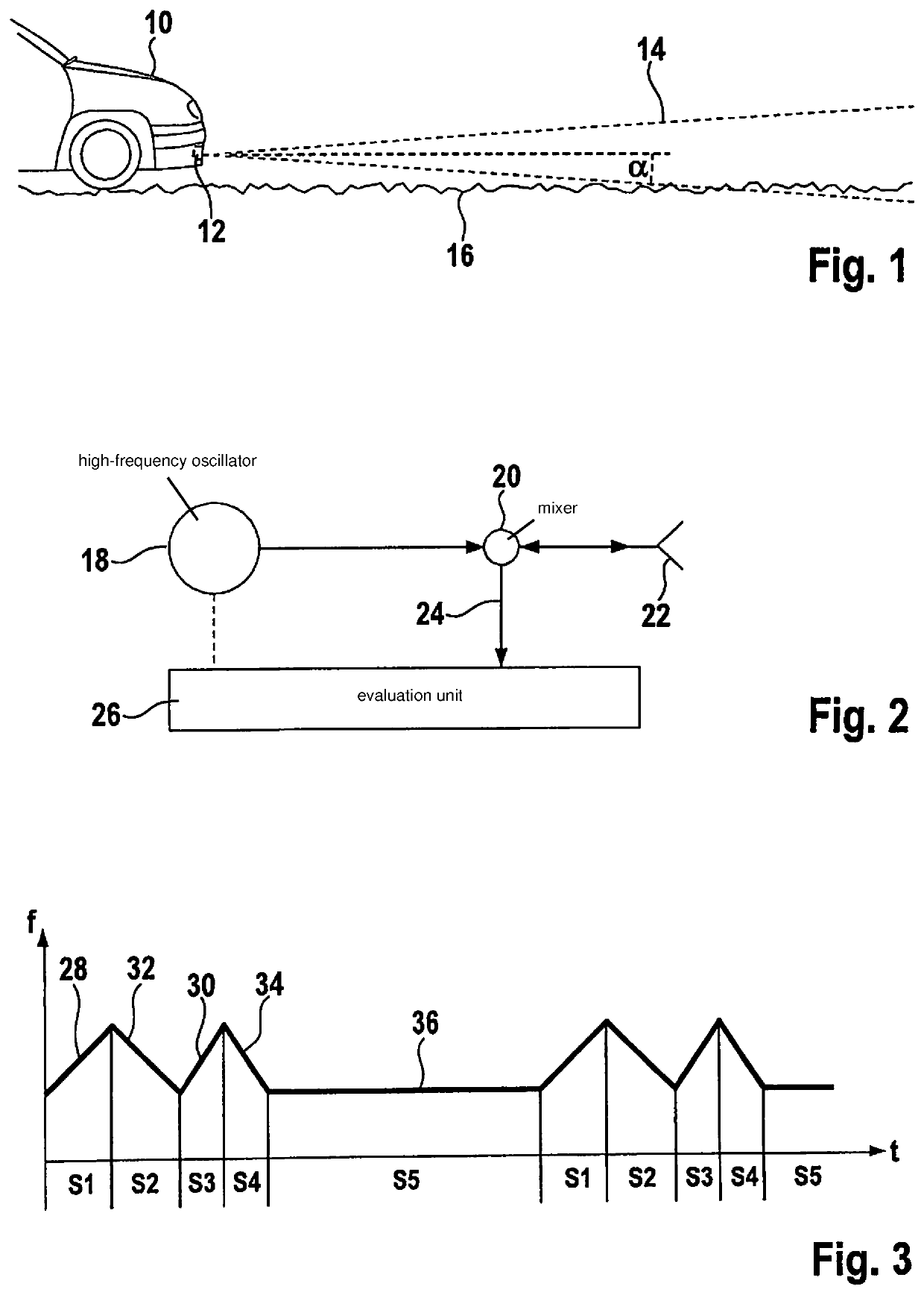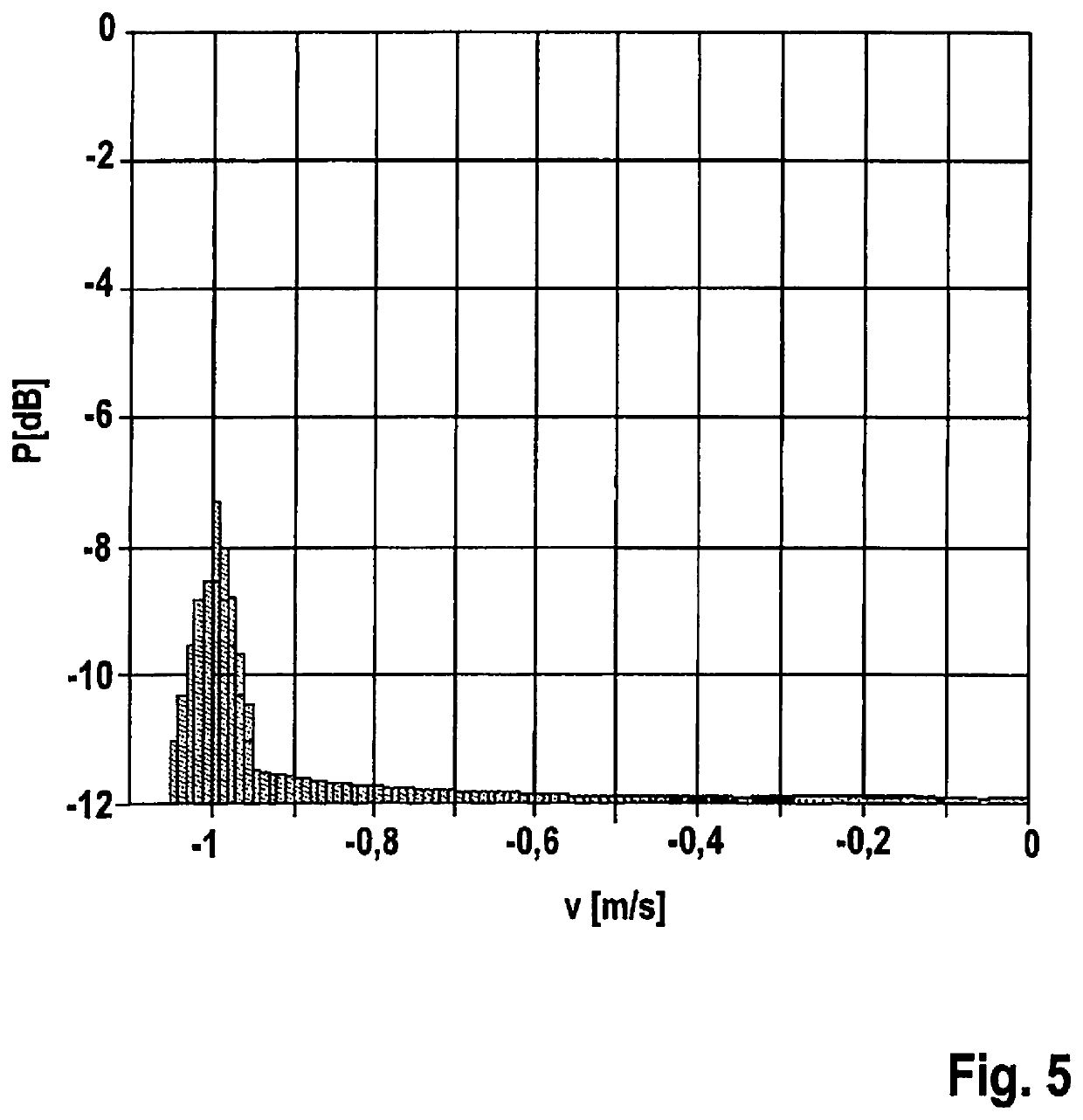FMCW radar sensor for motor vehicles
a technology for fmcw radar and motor vehicles, applied in the direction of instruments, measurement devices, using reradiation, etc., can solve the problems of inability to meet the needs of stationary objects in all situations, the accuracy of wheel-speed sensors tends to worsen, and the calibration error of certain parameters, etc., to achieve the effect of simple and precise manner
- Summary
- Abstract
- Description
- Claims
- Application Information
AI Technical Summary
Benefits of technology
Problems solved by technology
Method used
Image
Examples
Embodiment Construction
[0023]FIG. 1 shows a front part of a motor vehicle 10, which has an FMCW radar sensor 12 installed behind the bumper. The radar sensor emits a radar lobe 14, which is directed toward the front in the direction of travel of vehicle 10 and, in elevation, is aligned approximately parallel to a road surface 16 depicted in exaggerated form in this instance. Since the radar lobe diverges both in azimuth and in elevation, a portion of the radar beams impinges upon road surface 16 starting at a certain distance in front of vehicle 10. The small surface irregularities on the road surface form targets by which a radar echo is returned to the radar sensor. These radar echoes generated by road surface 16, which are known as ground clutter, are utilized according to the present invention for measuring the ego velocity of vehicle 10. In addition, it is of course also possible to evaluate radar echoes from other stationary objects, e.g., radar echoes from roadside structures adjacent to the road.
[...
PUM
 Login to View More
Login to View More Abstract
Description
Claims
Application Information
 Login to View More
Login to View More - R&D
- Intellectual Property
- Life Sciences
- Materials
- Tech Scout
- Unparalleled Data Quality
- Higher Quality Content
- 60% Fewer Hallucinations
Browse by: Latest US Patents, China's latest patents, Technical Efficacy Thesaurus, Application Domain, Technology Topic, Popular Technical Reports.
© 2025 PatSnap. All rights reserved.Legal|Privacy policy|Modern Slavery Act Transparency Statement|Sitemap|About US| Contact US: help@patsnap.com



